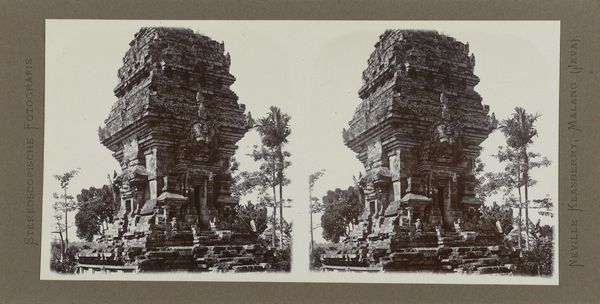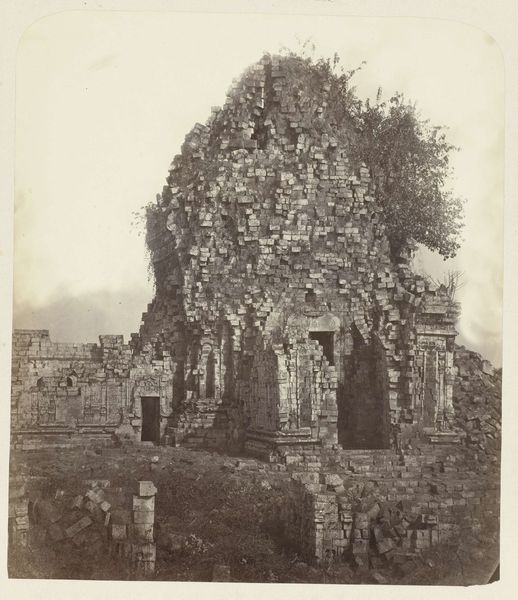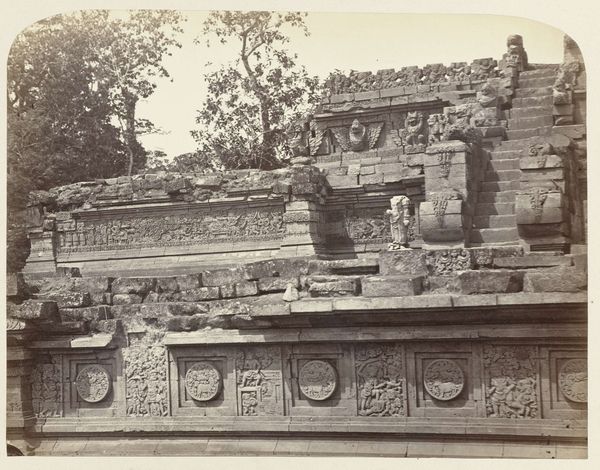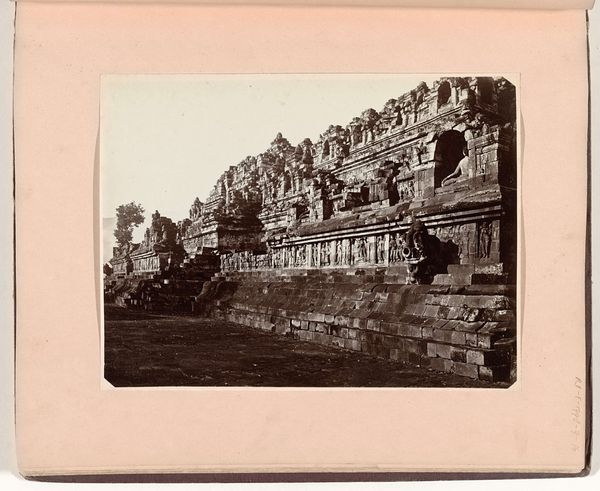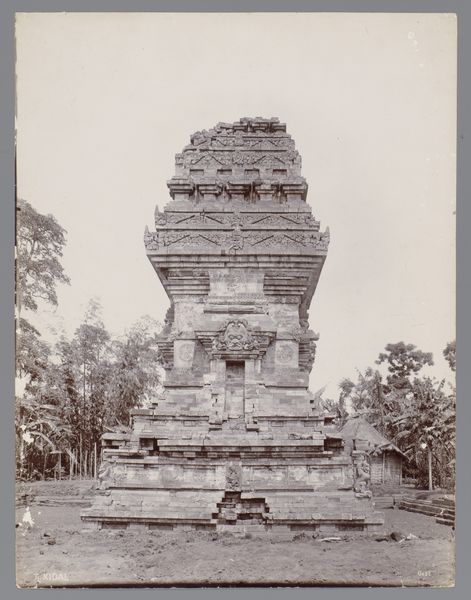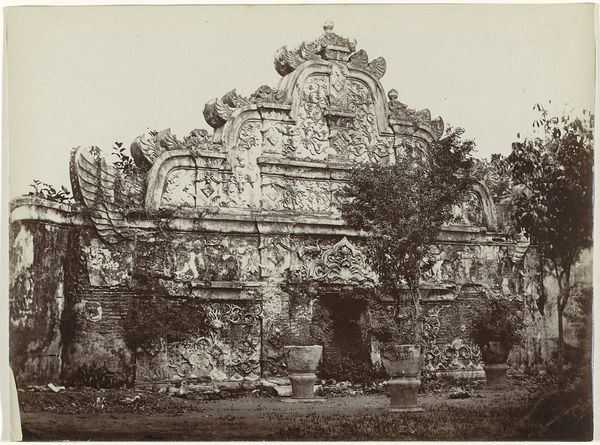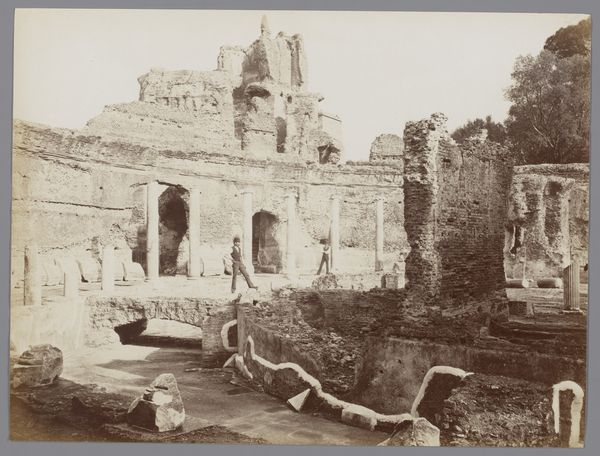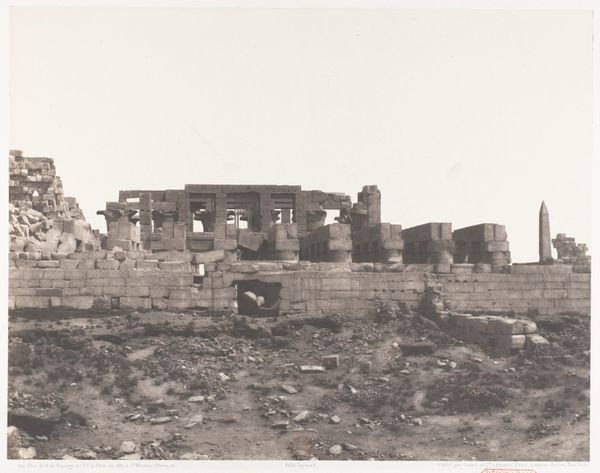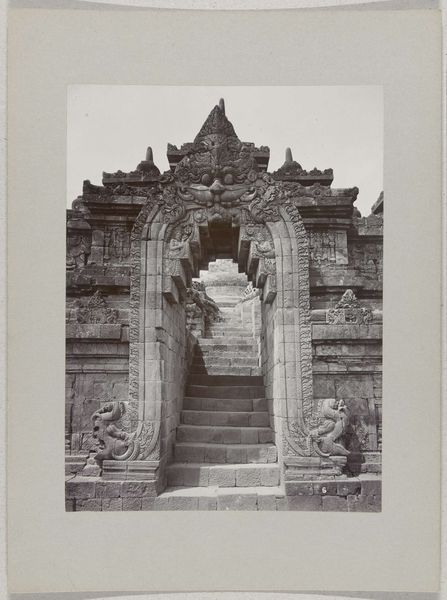
photography
#
asian-art
#
landscape
#
photography
#
ancient-mediterranean
Dimensions: height 175 mm, width 244 mm, height 243 mm, width 329 mm
Copyright: Rijks Museum: Open Domain
Editor: This is a photograph by Kassian Céphas, likely taken between 1895 and 1915. It’s titled "Candi Sewu met tempelwachters," which I believe translates to Candi Sewu with Temple Guardians. It’s quite striking, a sort of haunting scene in black and white. What do you see in this piece? Curator: I see a powerful commentary on the production and consumption of cultural heritage. Céphas was documenting these sites during a period of intense colonial interest. Consider the labor involved in creating these ancient structures versus the labor of documenting them through photography and then disseminating those images. Who benefited from this visual representation of "ancient" Asia? Editor: That’s a really interesting point about the labor involved in both creating and documenting. So, the very act of photographing becomes a form of engagement, a transformation of the original materials. Curator: Exactly. The photograph itself is a material object, a product of a specific technological process used to fix light onto a surface, consumed by the colonial gaze and later by us today. Think about the economic and social conditions of the photographer versus the craftsmen of the original structure. What were the original building made of, and what kind of exploitation was involved in its raw components and craftmanship? Editor: It's making me think differently about what "preservation" really means. Is it preserving history, or controlling the narrative around it? Curator: Precisely! We see ruins now, but we might have missed the materials, conditions, or even exploitations when it was first built or when the photograph was taken. How photography makes them timeless while omitting a chapter of how laboring activities of people involved in that place has changed, how time makes people disappear... Editor: I hadn’t really considered it in that light before. This photograph has a story embedded in the materials, right from the temple stones to the photographic paper. Curator: Indeed. This prompts us to reconsider how objects embody the economic and social relationships of their time. Editor: Thank you, this really helps understanding this photograph in a new perspective.
Comments
No comments
Be the first to comment and join the conversation on the ultimate creative platform.

